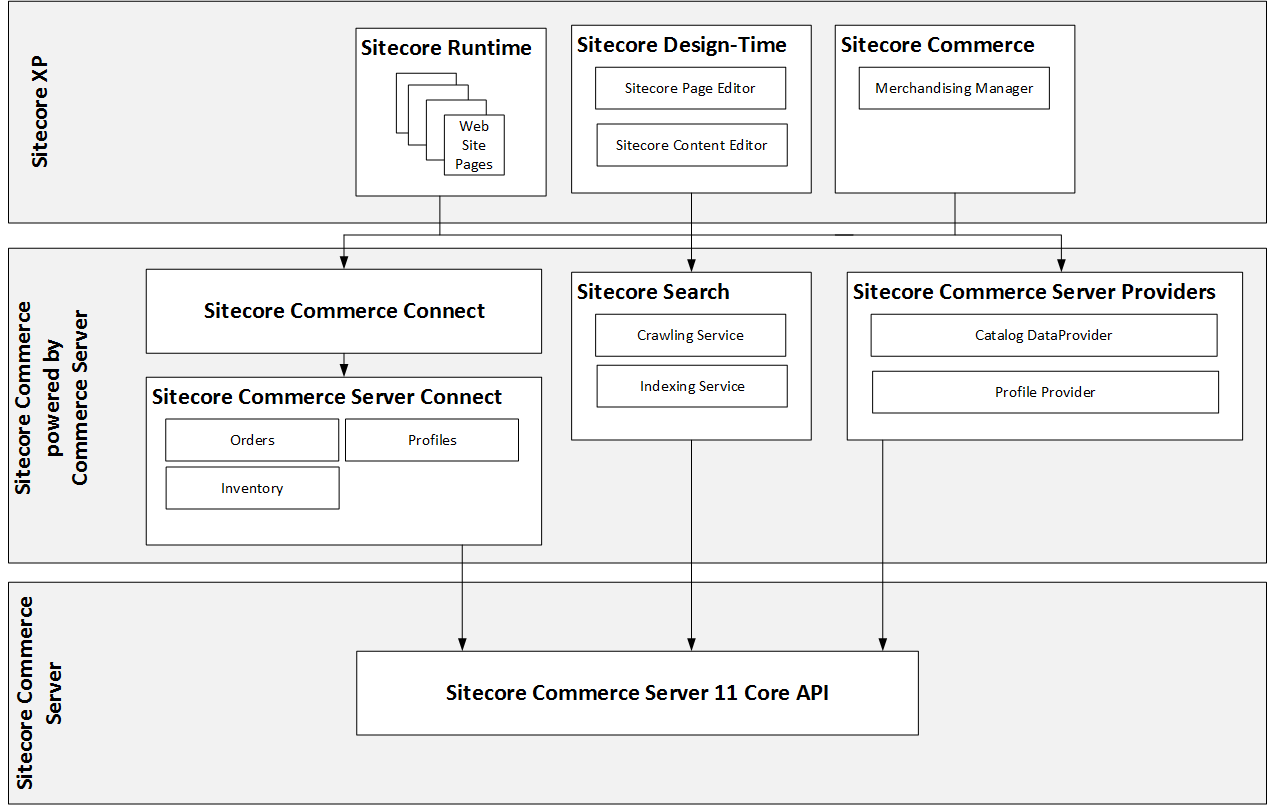Integration Architecture Fundamentals
Integrating Sitecore Commerce 8.2 powered by Commerce Server and Commerce Server 11.4 with Sitecore gives customers an extremely rich experience, allowing them to manage and market commerce data through the WCM.
Data providers are a data abstraction layer in Sitecore. Any data that is exposed to Sitecore through a data provider is treated as if it is actually part of Sitecore, this means:
Data appears in the Sitecore tree as a Sitecore item.
Context menu or ribbon buttons can be used on the item.
A user can edit the data of the item within Sitecore.
Sitecore users can edit the data through a familiar interface.
Sitecore users can preview the shopper experience perform inline edits.
Data providers allow you to interact live with your data through Sitecore, get all of the benefits of the Sitecore UI, and not have to worry about syncing your data between Sitecore and the Sitecore Commerce 8.2 powered by Commerce Server and Commerce Server 11.4 databases.

The architecture diagram details how Sitecore and Commerce Server are integrated. The following list highlights functional and architectural features:
The Catalog is exposed into Sitecore using data providers, other CS sub systems use Sitecore pipelines.
Search drives how products are found in Commerce Server.
The Staging Service moves CS data between environments.
The business tools (SPEAK) are driven through the Sitecore Web Item API.
Commerce Server profile data is exposed through a ASP.NET profile provider.
The Commerce Connect pipelines (.pcf files) call into the Commerce Server pipelines